Samuel Bell (architect)
Samuel Bell (1739–1813) was a Scottish architect mainly associated with the town of Dundee. He was the prime shaper of the city centre and in particular the Nethergate.
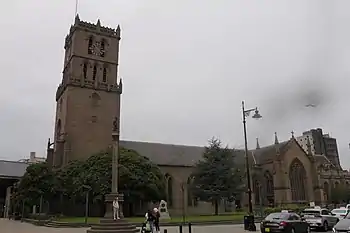
Life
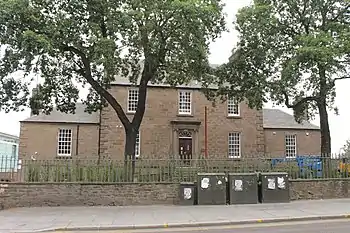
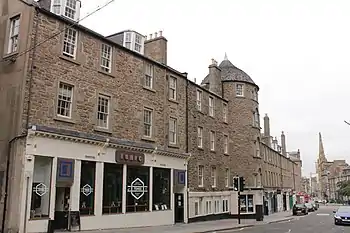
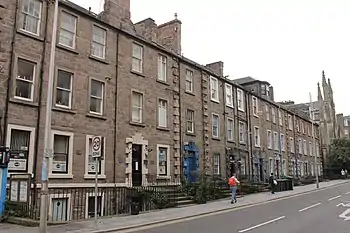
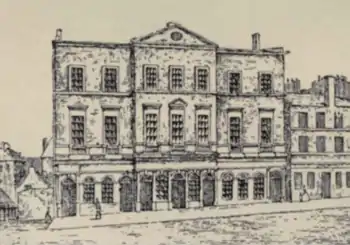
He was born on 6 May 1739, the son of John Bell, a wright in Dundee and originally trained as a wright himself. In this role he would have worked with local architects from 1755 to 1770. He then became an architect and received many local commissions from 1770 onwards.[1]
He was the first person to be officially Town Architect for Dundee.[2] His most important commission in terms of prestige was the major rebuilding of Dundee's primary church: the Steeple Church.[3]
He died on 23 January 1813. He is buried in The Howff Burial Ground in central Dundee.[4]
Main Works
All works are in Dundee unless otherwise stated.
- St Andrews Church (1772) working with James Craig
- Trades Hall (1776)
- English Episcopal Chapel (1783)
- St Clements Church (1786) later renamed the Steeple Church
- Forfar Parish Church (1788)
- "Miln's Building" at 136 Nethergate (1790)
- Morgan Tower, 133-139 Nethergate (1790)
- Town house for Alexander Riddoch (1790) now known as Nethergate House
- Sailor's Home (1790)
- Trinity House (1790)
- Lintrathen manse (1795)
- Tannadice manse (1797)
- Duntrune Mill (1799)
- Aberlemno Parish Church (1799)
- Theatre Royal (1808)
- Kinnettles Parish Church (1811)
- St Rule's Church, Monifieth (1812)
The Theatre Royal still exists as a frontage; at 7 to 21 Castle Street[5] Nethergate House also survives.[6]
Family
Not known
References
- http://www.scottisharchitects.org.uk/architect_full.php?id=405651
- The Dundee Book by Billy Kay
- http://thesteeplechurch.org/about-us/history/outline-history/
- https://www.findagrave.com/memorial/155903722/samuel-bell
- http://portal.historicenvironment.scot/designation/LB25001
- https://www.scottish-places.info/features/featurefirst8860.html